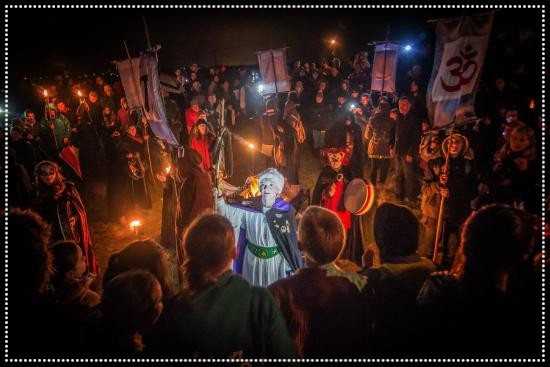Bats, cats, owls…
Ghost, ghouls, the Grim Reaper…
Witches on broomsticks, boiling, bubbling cauldrons, and bonfires…
These are some of the modern-day associations with Halloween, October 31st. There is a far older association with this time known as Samhain or “Summer’s End,” marking the end of the harvest, the time to thin herds of cattle, preparation for the colder weather of winter to come.
The Pagan tradition of this fire festival has recorded roots from the 10th Century in Ireland, though it goes even farther back in the Gaelic and Celtic Isles and Europe. There are similar festivals throughout the world with other cultures and traditions celebrating this time of year as well.
Samhain is the spiritual New Year’s Eve. This is a time when the veil is the thinnest between the Otherworld and the physical world, making it easier for the dead and supernatural beings to enter and commune with us. This was a time of bonfires, guising, mumming, feasting, and divination. A time of setting up ancestor altars and remembering our recent dead, our beloved dead, our long dead, and setting a place at the table for them with food and drink and the telling of ancestral stories.
With the spread of Christianity, this festival morphed into All Saints’ Day, November 1st, and All Souls’ Day, November 2nd (see below).
Halloween comes from All Hallow’s Eve, October 31st. Halloween and Samhain are different in focus and practice. Halloween is a secular folk holiday very similar to Thanksgiving and celebrated by people playing in the realm of fantasy and make believe.
From Shakespeare’s “Bubble, bubble, toil, and trouble” to popular songs “I’ve Put A Spell On You” and Michael Jackson’s iconic “Thriller,” we love all things mysterious and spooky — especially at this time of year.
Merry meet, merry part, and merry meet again. Blessed Be.
